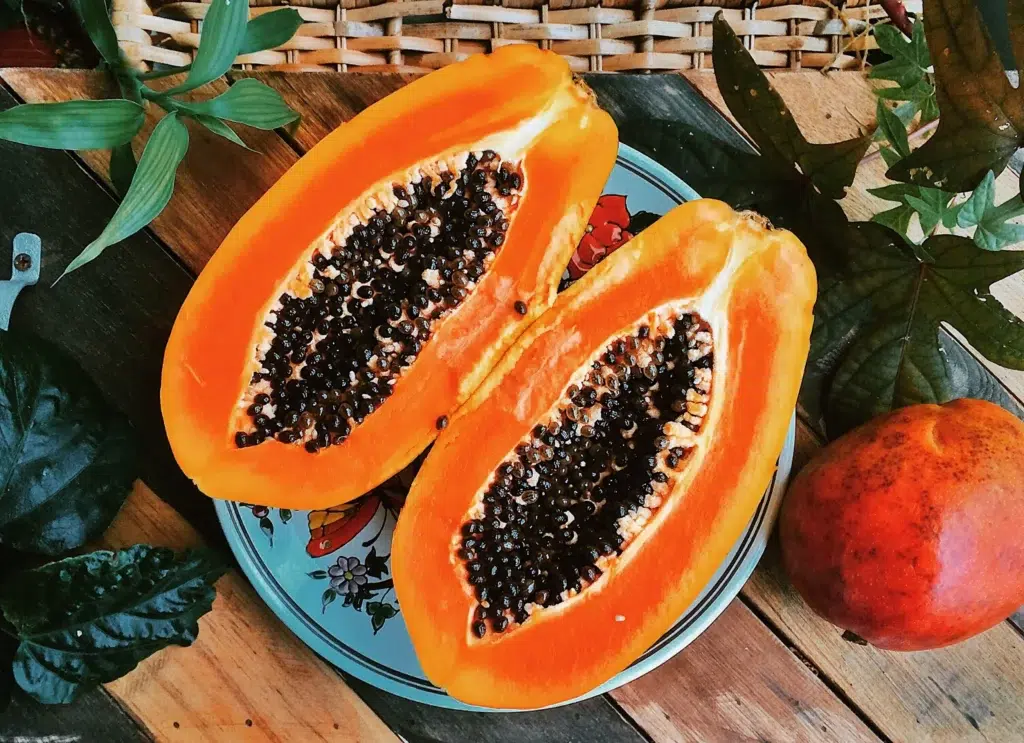“Sweet like sugar, everybody likes pawpaw” or so goes the nursery rhyme. Of a fact, many people, if not all, like papaya, perhaps for the luscious, mouthwatering juice it gives when eaten. Alternatively, maybe because of its medicinal benefits. Besides, it is quite affordable to buy. Papaya is a small tree plucked when still unripe and kept in the dark to ripen. When it matures, the flesh is sweet and juicy and tastes like watermelon. Pawpaw is a succulent fruit of a large plant of the family Caricaceae that is considered a tree, though its trunk looks like spreading palms, up to 8 m tall, is more of a shrub than a tree.
Season and Cultivation of Papaya
Pawpaws are fruits that grow on trees and are believed to originate from the tropical regions of North and South America. Its scientific name is Carica papaya. Pawpaws grow best in areas that are very hot and thrives in most kinds of soil, but better cultivated on loamy soil.Pawpaws can be planted at any time of the year, but preferably in late summer.
Nutritional facts of Papaya
Unripe pawpaw is used in some parts of the world as a vegetable. Nevertheless, it must be cooked when used green. There are diverse ways people eat pawpaw, and this includes its juice, which is often blended with other natural fruit juices because of its appealing taste. Aside this, it is as well excellent for making salads, salsa, and, can be consumed alone. Pawpaw contains a high percentage of vitamin C which is superb in preventing infections.
Medicinal Uses of Papaya
Papaya is very useful as a therapeutic fruit. For instance, Pawpaw helps in improving digestion. It contains papain, an enzyme that hastens metabolism by hydrolyzing proteins and also washes the digestive tract. Papayas are as well helpful for people who are seeking natural ways of weight control. They are efficient for destroying intestinal bacteria, thereby preventing infections related to them. A blend of mint papaya roots can be applied to the teeth and gums to obtain succor from tooth pain. Also, papaya is efficient in curing cancers – breast, pancreatic, and some others. The fruit is now renowned and has been used in many medicines for its anticancer powers. Papayas can be effective enlivening agents; this makes it very important in skin care.
Similarly, the seeds of pawpaws help in maintaining a healthy heart. With three potent antioxidant vitamins A, C, and E, pawpaws are of immense help in averting complications such as heart artery constriction and myocardial infarction.
Products made from pawpaw
Products obtainable from papaya include meat tenderizers, skin care products, cooking additives amongst others.
Culinary uses
Pawpaw is quite an efficient cookery item. Take, for example, some people eat pawpaw fruit raw, after peeling off the skin and removing the seeds. The unripe green fruit can be taken when cooked, mostly in curries, salads, and stews, using the raw and cooked ones as well.
In Thailand meals, papaya can be made into Thai salads, for instance, som tam. It could also be worked into Thailand curries when it is yet to be ripe. As kaeng som when still not fully ripe. In Indonesian cookery, unripe pawpaw fruits and tender leaves are cooked and used as ingredients of lalab salad, while the flower nodes are blended with unripe tomatoes as Minahasan pawpaw flower vegetable soup.
In Brazil, the green pawpaw fruits are usually used in confectioneries and as preservatives. Asians use pawpaw seeds as a replacement for black pepper.


